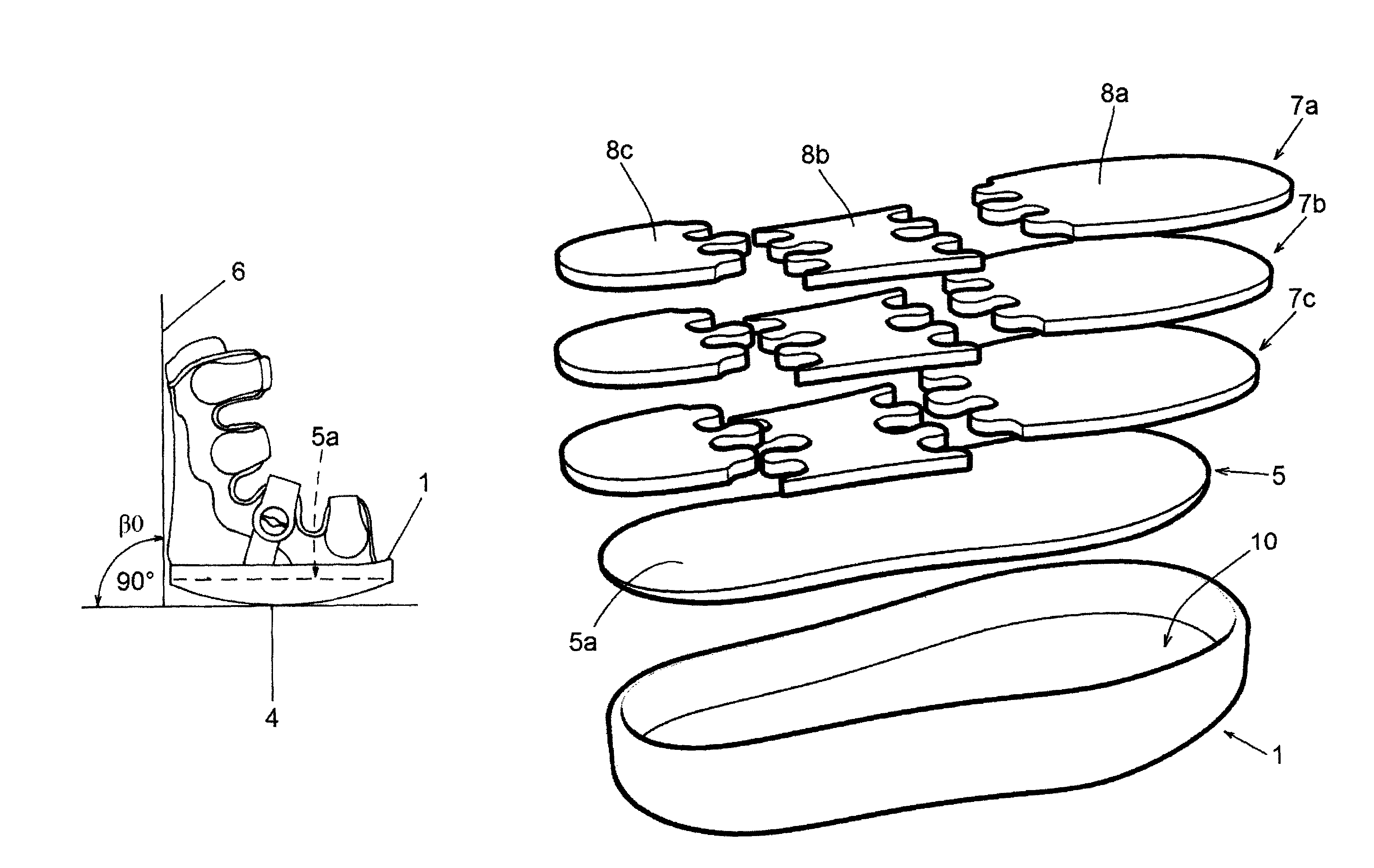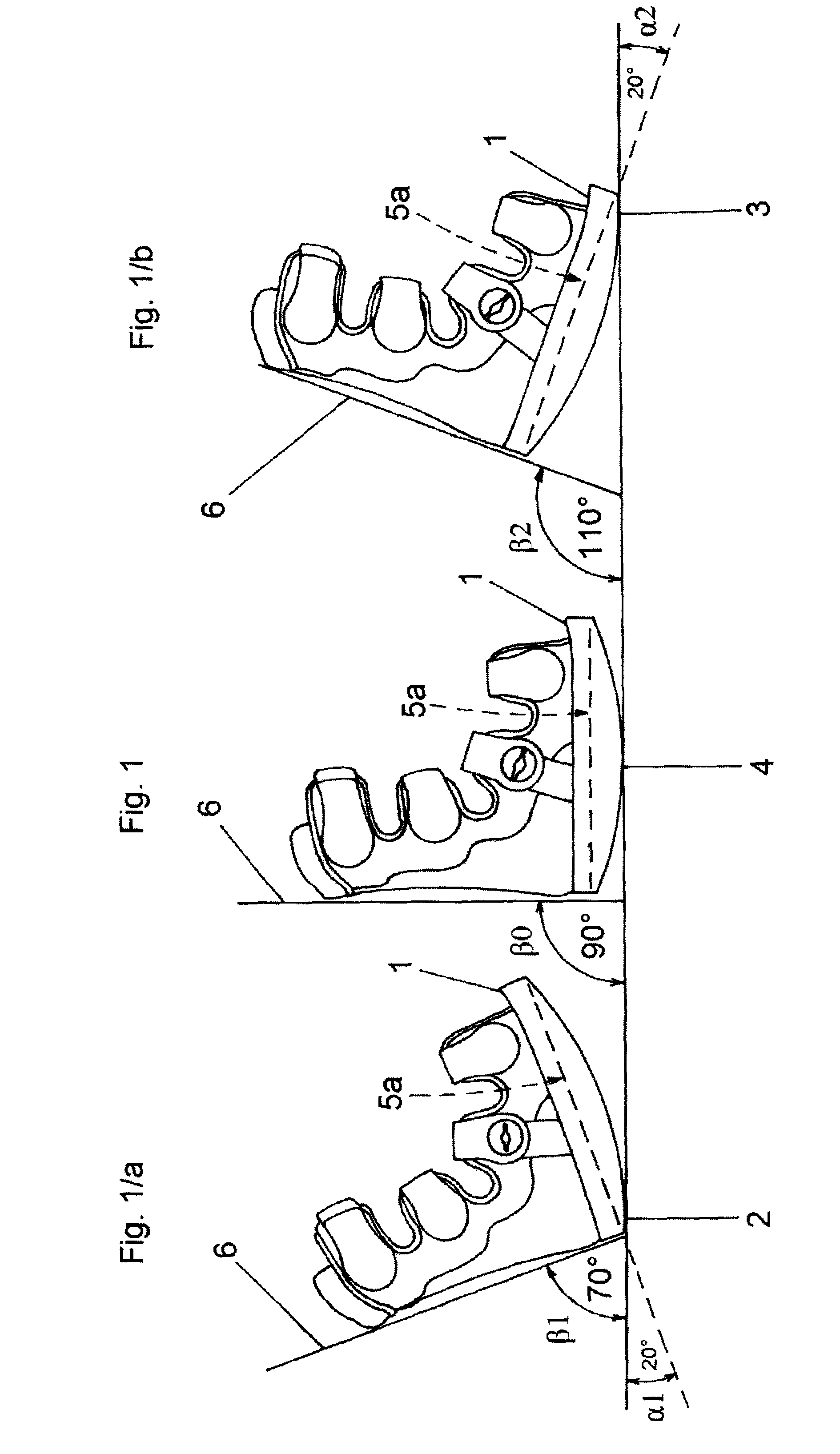Footwear orthosis
a technology for orthotics and shoes, applied in non-surgical orthopedic devices, medical science, apparel, etc., can solve the problems of inconvenient deambulation, constant sheer force in the middle flat part of the bottom sole, and total contact with the surface underneath all the central plantar area, so as to avoid sheer force
- Summary
- Abstract
- Description
- Claims
- Application Information
AI Technical Summary
Benefits of technology
Problems solved by technology
Method used
Image
Examples
Embodiment Construction
[0030]The rigidity of the bottom sole 1 is obtained by an element called a “rigid insert 5”, which is inserted into the bottom sole 1 in an opposite groove 10, having a function of avoiding flexing and torsion in the entire plantar area of the foot, both in a static or dynamic phase. The groove having a depth (D) of at least 10 mm. This rigid insert 5 is extremely resistant to repeated flexes, moulded with a very rigid, light, uncrushable, antibacterial and washable material. The molds are the exclusive property of the company that is presenting this patent application. This rigid insert 5 is characterized by a particular rigidity, lightness and uncrushability, and it has a completely flat structure 5a on the upper part which is in contact with the foot and lower structure 5b that follows the lines of the bottom sole 1 to which it is attached. This is to ensure that the foot rests on a completely flat surface without modifying the deambulation created by the deambulation ramp of the...
PUM
 Login to View More
Login to View More Abstract
Description
Claims
Application Information
 Login to View More
Login to View More - R&D
- Intellectual Property
- Life Sciences
- Materials
- Tech Scout
- Unparalleled Data Quality
- Higher Quality Content
- 60% Fewer Hallucinations
Browse by: Latest US Patents, China's latest patents, Technical Efficacy Thesaurus, Application Domain, Technology Topic, Popular Technical Reports.
© 2025 PatSnap. All rights reserved.Legal|Privacy policy|Modern Slavery Act Transparency Statement|Sitemap|About US| Contact US: help@patsnap.com



